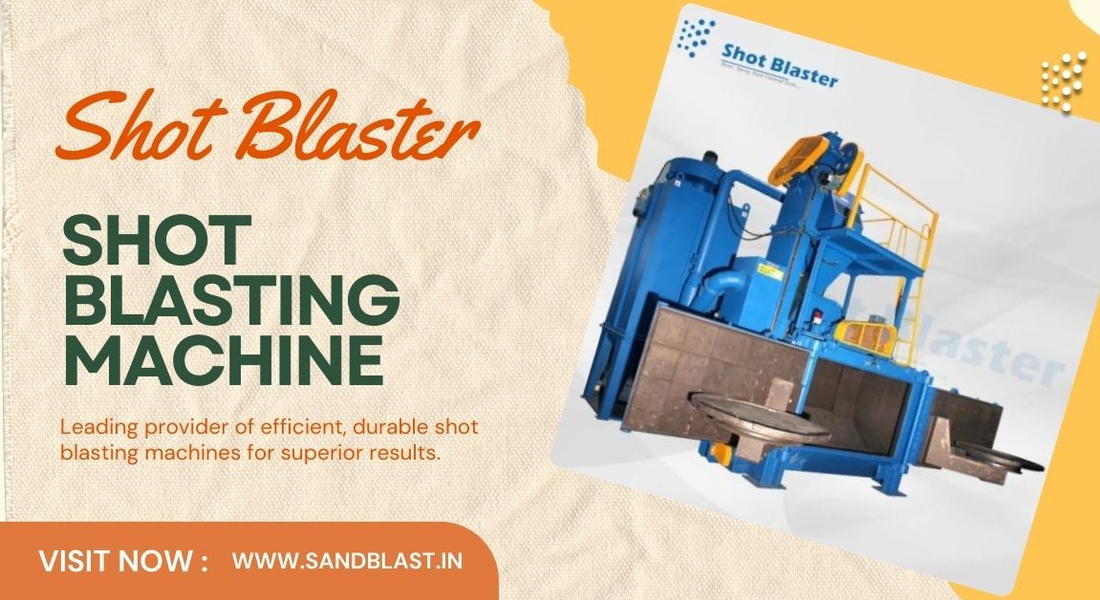Shot Blasting Machine Installation – Step-by-Step Guide for Businesses
By:
Riya Singh
On
08/03/2025Reading time:
12 min
Summary:

Shot Blasting Machine
Installing a shot blasting machine is pivotal for businesses aiming to enhance surface preparation processes. Proper installation ensures optimal performance, safety, and longevity of the equipment.
Shot Blasting Machine Installation
Installing a shot blasting machine is a critical process that ensures optimal performance, safety, and longevity of the equipment. Here's a step-by-step guide to assist businesses in the proper installation of shot blasting machines:
1. Pre-Installation Planning
Review Technical Documentation: Obtain and thoroughly review all technical documents from the manufacturer, including machine drawings, foundation pit designs, circuit diagrams, and installation manuals. These documents provide essential details for accurate installation.
Site Preparation: Ensure the installation site meets the necessary requirements, such as adequate space, proper ventilation, and appropriate flooring to support the machine's weight and operation.
2. Foundation Construction
Foundation Pit: Construct the foundation pit as per the manufacturer's specifications. Accurate dimensions and structural integrity are crucial to support the machine's operation and prevent vibrations.
Curing Period: Allow the foundation to cure properly before proceeding with the installation to ensure stability.
3. Machine Assembly
Positioning: Carefully position the main body of the shot blasting machine onto the prepared foundation, ensuring alignment with the foundation bolts.
Component Installation: Assemble auxiliary components such as the blast chamber, abrasive recovery system, dust collector, and control panels according to the manufacturer's guidelines.
4. Electrical and Pneumatic Connections
Electrical Wiring: Connect the machine to the power supply following the provided circuit diagrams. Ensure all connections are secure and comply with local electrical standards.
Pneumatic Systems: If the machine utilizes pneumatic components, connect them to the compressed air supply, ensuring proper pressure levels are maintained.
5. Abrasive Loading
Abrasive Selection: Choose the appropriate abrasive material (e.g., steel shots, grits) suitable for your specific application.
Loading: Fill the machine's abrasive reservoir to the manufacturer-recommended level, avoiding overfilling to prevent operational issues.
6. Safety Checks
Inspection: Perform a thorough inspection to ensure all components are securely fastened, electrical and pneumatic connections are correct, and safety guards are in place.
Personal Protective Equipment (PPE): Ensure that all operators are equipped with the necessary PPE, such as helmets, gloves, and protective clothing, to safeguard against potential hazards.
7. Trial Run
No-Load Test: Conduct a no-load test run to verify that all systems function correctly without any abrasive material.
Load Test: After a successful no-load test, perform a load test with abrasive material to assess the machine's performance under operational conditions.
8. Final Adjustments
Calibration: Adjust machine settings, such as abrasive flow rate and blast pressure, to achieve the desired surface finish.
Training: Provide comprehensive training to operators on machine operation, safety protocols, and maintenance procedures.
By meticulously following these steps, businesses can ensure the efficient and safe installation of shot blasting machines, leading to enhanced productivity and extended equipment lifespan.
Conclusion
Proper installation of a shot blasting machine is essential for optimal performance and safety. By following a structured approach—meticulous pre-installation planning, constructing a solid foundation, precise assembly, secure electrical and pneumatic connections, appropriate abrasive loading, comprehensive safety checks, thorough trial runs, and final adjustments—you ensure the equipment operates efficiently and safely. This diligence not only enhances productivity but also extends the machine's lifespan, providing long-term value to your business.
